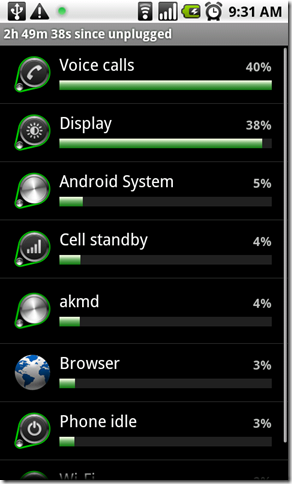I just got a happy email from AT&T Wireless trumpeting their DC metro mobile data service update:
That’s right! AT&T has the fastest 3G network in the nation. That’s just one of the reasons when you compare, there’s no comparison.
I beg to differ. I have experienced better data service pretty much everywhere else in the world than what I get in Washington, DC. That includes The Netherlands, France and Germany but also Bosnia, Egypt and the West Bank. In downtown DC, it is common for my iPhone 3Gs to switch from 3G to Edge or lose data service altogether for several minutes. I have been walking around with a Nexus One, which is only Edge with AT&T, for the last week and I can’t tell the difference.
Metro Service
Metrorail customers can make calls, send text messages or surf the web from inside the following 20 stations: Ballston, Bethesda, Columbia Heights, Crystal City, Dupont Circle, Farragut North, Farragut West, Federal Triangle, Foggy Bottom-GWU, Friendship Heights, Gallery PI-Chinatown, Judiciary Square, L’Enfant Plaza, McPherson Square, Metro Center, Pentagon, Pentagon City, Rosslyn, Smithsonian and Union Station.
That is very cool but it just achieves parity with where Bell Atlantic (now Verizon) was in the 1990s. I gave this up to go to Voicestream way back when.
Expanded 3G Coverage
In the last quarter of 2009, we expanded our 3G service to several new areas including Talbot, Caroline, Kent and Queen Anne counties on the eastern shore in Maryland. Additionally, 3G expanded to the Northern Piedmont area and the Shenandoah Valley area of Virginia. Communities including Burr Hill, Madison, Locust Dale, Mineral, Wolftown, Haywood, Richardsville, Elkwood, Unionville and Brandy Station, Strasburg, Toms Brook, Woodstock, Edinburg, Rileyville, Mount Jackson, Luray, Flint Hill, Linden, Markham, Chester Gap, Huntly, Hume, Fishers Hill, Cross Junction, Middletown, Star Tannery, Quicksburg, Orkney Springs, Bentonville, and Basye now have enhanced wireless service. Franklin County in lower PA also launched 3G service.
This is also nice but why on earth is it that in the heart of DC in places like K Street, Foggy Bottom, U Street corridor and DuPont Circle I get “3G” coverage that is indistinguishable from Edge service?
Expansion is great. I’m all for it but clearly AT&T has oversold its data service in the nation’s capital. AT&T customers are paying outrageous fees for data service that AT&T isn’t really providing. AT&T needs to rectify the situation and provide real 3G service or expect to lose customers to Verizon. I am seeing more and more Droids around here and the Verizon Nexus One is coming.




 It’s important to set the call timeout as long as possible on your SIP service to make sure that Google Voicemail will kick in before a network error does. Also, be careful not to create a dialing loop. If you are forwarding calls from a number to Voice, don’t have Voice dial that number. (See above where Voice is not dialing my AT&T number because that is what is forwarding to my Google number.)
It’s important to set the call timeout as long as possible on your SIP service to make sure that Google Voicemail will kick in before a network error does. Also, be careful not to create a dialing loop. If you are forwarding calls from a number to Voice, don’t have Voice dial that number. (See above where Voice is not dialing my AT&T number because that is what is forwarding to my Google number.)







